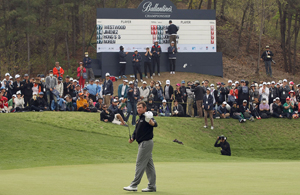The Royal Golf Club's head PGA teaching professional Martin Robinson gives tips on aimless aiming
COLIN Montgomerie once said he could save most golfers six to eight shots if he were to caddy for them in a round. He believed that poor decision making is heavily responsible for high scores and I would tend to agree with him. I am going to outline some of the easily avoidable mistakes that I see out on the course.
Aimless aiming - off the tee people tend to aim where the tee markers are pointing. This is in the general direction of the fairway. You should be extremely specific when picking a target to aim at and take all the external factors into consideration when picking a starting direction - the wind will have an effect on the ball.
Also, on a sloping course like the Royal Golf Club the ball will tend to bounce sideways as it strikes the ground so you have to work this out backwards, decide where you want the ball to finish, then where you want it to land, then where you want it to start before the wind alters the flight - this point can quite often be well to the side of where you would have originally aimed.
The next stage where people often go wrong is when they go off track and into the desert. Almost everyone is far too greedy with the line they take on the recovery shot; in trying to advance the ball forward it is very easy to end up back in the desert or the rough.
Playing the hole without being on the fairway makes it extremely difficult to score well. Try to take a line that is a little more conservative and a club that will almost guarantee a shot that makes it back on to the fairway - you can then play the hole from further back, but in a much better position.
The last mistake is that the line that amateur golfers take to the green is almost always directly at the flag. Most professionals would tell you that they would almost never aim directly at the flag, the reason being that the flag will often be situated either right or left or front or back of the green, usually close to trouble such as water or sand.
Given that none of us can hit the ball exactly where we want it most of the time, we need to leave some margin for error. So, if the flag is left, aim at the right half or centre of the green.
If there is water over the back, favour the front of the green etc. All the best players I know miss the green on the correct side, and are normally left with a straightforward chip rather than an impossible one.
Errant approach shots then become pars and bogeys instead of doubles and trebles should you find yourself missing the green on the wrong side.
Next time you play, try to be sensible with your line and club selection and watch the disaster holes disappear off your scorecard.









